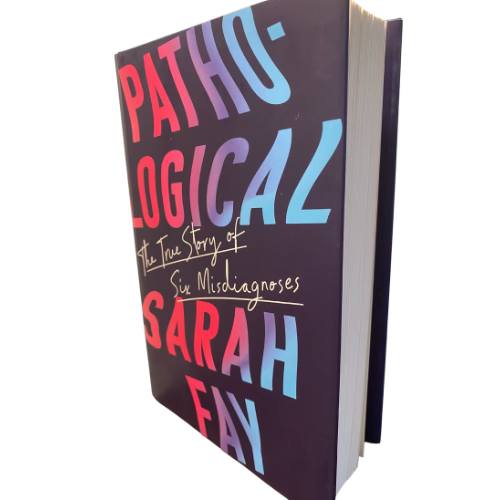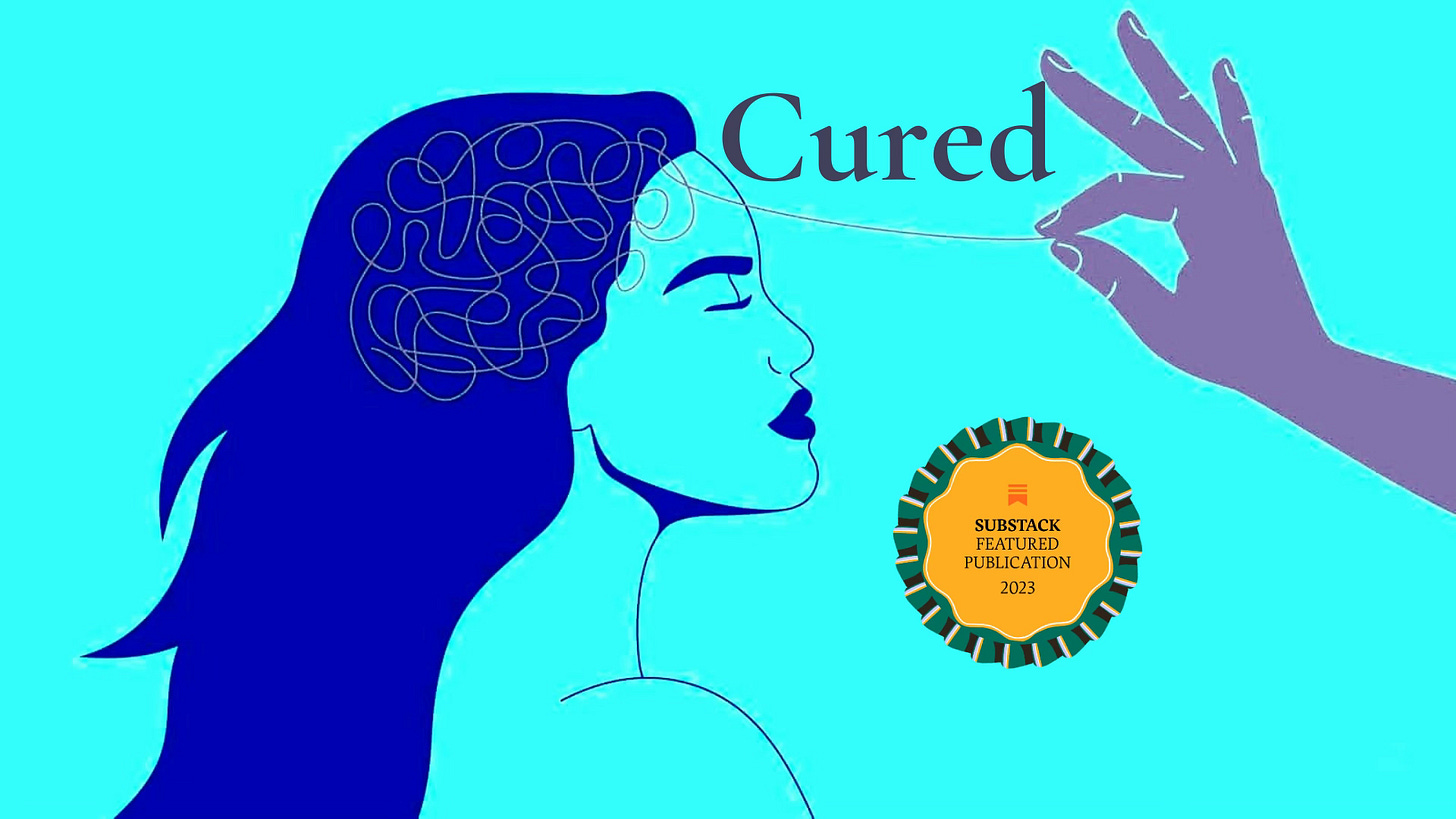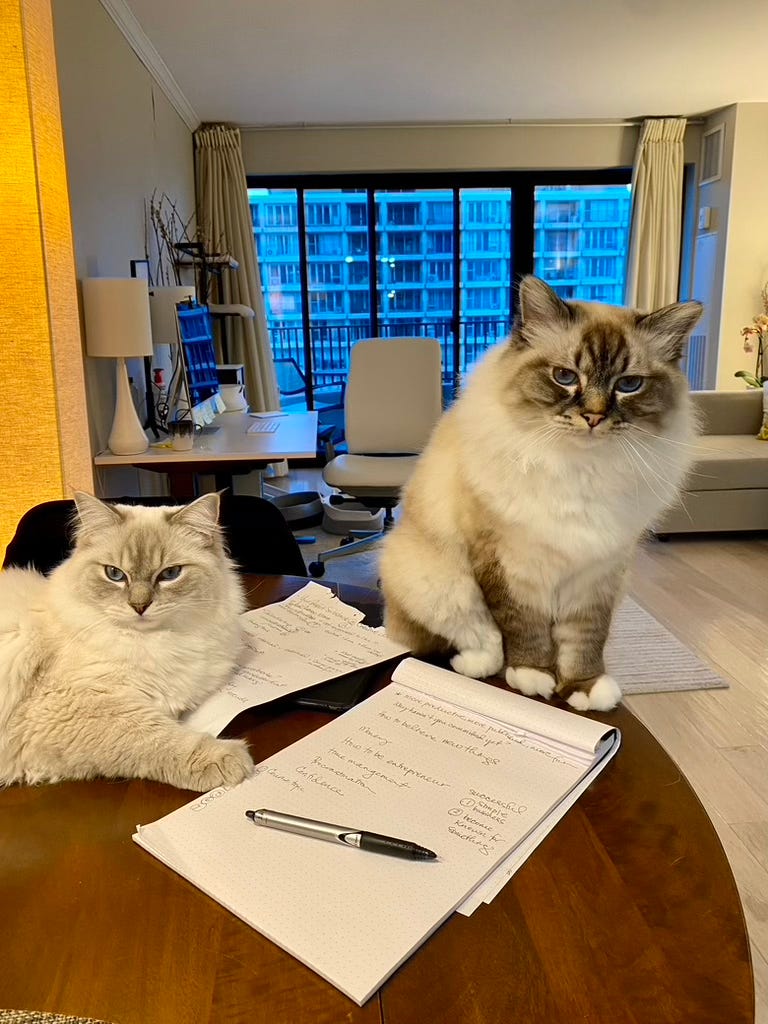
(MFA, MA, PhD) is an award-winning author, educator, activist, and entrepreneur. Her work focuses on mental health advocacy and questioning society’s happiness formula and how to create our own.
Her debut memoir Pathological: The True Story of Six Misdiagnoses(HarperCollins) was an Amazon bestseller, an Apple Best Books pick, and hailed by The New York Times as a “fiery manifesto of a memoir.” It was featured on NPR, Oprah Daily, Salon, Forbes, The Los Angeles Times, and more.
The highly anticipated sequel Cured is a bestselling Featured Publication on Substack.
As a writer, Sarah’s writing appears in many publications, including The New York Times, The Atlantic, Time, and The Paris Review, where she was an advisory editor. Her essays have received Notable Mention in Best American Essays and Pushcart Prize nominations. She’s the recipient of the Hopwood Award for Literature and fellowships from Yaddo and the MacDowell Colony, among others.
1. Why Substack?
Like many authors, I had a book coming out and my publisher told me to start a Substack. My memoir Pathological: The True Story of Six Misdiagnoses was coming out from HarperCollins. I met with the marketer and she told me to start a Substack. I've never heard of it. And I did what so many writers do: I got on the platform and just started writing and publishing. That's not the best strategy on Substack.
2. How long did it take you to find your groove?
My Substack didn’t exactly take off. This was years ago—before Notes. It was called Start with a Question. I would ask a question and then answer it. It covered a lot of topics, often circling around culture and human nature. Topics like the fear of death, anxiety, what's happening with young people on social media and mental health, what the Girl Scouts have to do with our mental health, all sorts of topics. I loved it. It was really fun.
Then my agent introduced me to Sophia, the head of writer relations for Substack. She looked at my Substack, told me what to change, what works on the platform and what doesn't. I changed it and my Substack took off. I went from about 300 subscribers to 2,000 in just about six months.
Something clicked. I’d been teaching creative writing in academia for fifteen years. Something about Substack clicked with me. I realized how writers can use the platform to get their work into the world. And Substack Writers at Work was born.
It’s so rewarding to help others use Substack to their advantage, get traction in their careers, and earn the income they deserve—because everyone deserves to be paid for what they do.
I still have my author Substack. I serialized Cured, my second memoir on there, and right now I’m publishing a series called Less and Less of More and More, which questions the overabundance society says will make us happy and tries to figure out what really does.
3. How has it changed you?
It's completely changed me. Some time ago, I wrote Hamish McKenzie, the co-founder, an email to thank him. It’s changed me as a writer, a teacher, and as a human being.
As a writer, it’s reminded me that I’m writing for people, I'm not just in a room by myself. I’m talking to people and I want to talk to people. It's fine and lovely to create beautiful sentences. I'm all for it. And that doesn't interest me as much as connecting and speaking to people and giving an experience.
As a teacher, it's allowed me to help writers and people from different professions—chaplains and journalists and dentists and healers and so many more. I work with all kinds of people who have found their way to Substack and are using it to bring their work to the world.
And as a human being, I used to be so jealous of other people, especially other writers. Substack is this incredible community. It’s made me love supporting other people more than myself. I am fine promoting myself and my work and my teaching and what I have to offer people, but my greatest joy is watching other people succeed. I just love it.
4. What mistakes have you made?
The only mistake is trying to do it perfectly because there’s no such thing on Substack. The only thing that makes a Substack succeed is that it be entirely you and you—we all–are human and make “mistakes.”
5. To pay or not to pay?
This is a much longer conversation—and it’s wholly individual. I will say this: having a paid Substack does not mean paywalling. There are many levels to getting paid and making money on Substack.
6. What artistic and technical choices have you made?
I’ve made so many artistic and technical choices—testing everything for my clients and members of Substack Writers at Work.
On my author stack, the biggest technical and artistic choice I made was to make it my website. It’s now my whole online home. I am not on social media—and don’t miss it at all. I’m only on Substack and that’s plenty for me. My digital online home.
7. What’s been the effect on your writing?
I’m much more concerned with voice than I ever have been. No one taught it to me in any of my many workshops and M.F.A. and certainly not in my M.A. and Ph.D. programs.
8. In it for the long haul?
Yes, I’m in it for the long haul—to say the least! We all are, meaning me and my two beloved cats.
Subscribe to :








“Substack is this incredible community. It’s made me love supporting other people more than myself. I am fine promoting myself and my work and my teaching and what I have to offer people, but my greatest joy is watching other people succeed. I just love it.”
This joy is immeasurable and keeps growing. Truly magical! Thank you Sarah for offering us your wisdom over here so more and more and more can experience this unique kind of joy.
I’m so grateful to have found Sarah at an early stage of redoing my Substack. I learned so much from her and gained a community in the bargain. I see a Pilot Precise V5 on your writing pad! I use the same pen. Love it. 😍